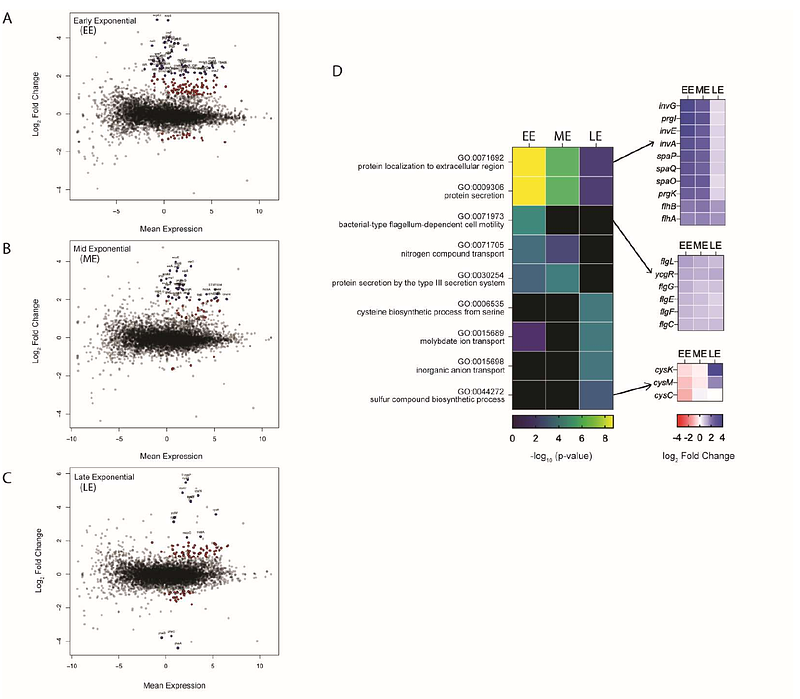A small RNA derived from the 5' end of the IS200 tnpA transcript regulates multiple virulence pathways in Salmonella Typhimurium

A small RNA derived from the 5' end of the IS200 tnpA transcript regulates multiple virulence pathways in Salmonella Typhimurium
Haniford, D. B.; Westermann, A. J.; Trussler, R. S.; Scherba, N.-J. Q.; Ellis, M. J.; Forstner, K. U.; Albert, M.
AbstractThe insertion sequence IS200 is widely distributed in Eubacteria. Despite its wide-ranging occurrence, IS200 does not appear to be mobile and as such is considered an ancestral component of bacterial genomes. Previous work in Salmonella enterica revealed that the IS200 tnpA transcript is processed to form a small highly structured RNA (5\'tnpA) that participates in the post-transcriptional control of invF expression, encoding a key transcription factor in this enteropathogen\'s invasion regulon. To further examine the scope of 5\'tnpA transcript integration into Salmonella gene expression networks, we performed comparative RNA-seq revealing the differential expression of over 200 genes in a Salmonella SL1344 5\'tnpA disruption strain. This includes the genes for the master regulators of both invasion and flagellar regulons (HilD and FlhDC, respectively), plus genes involved in cysteine biosynthesis (cysteine regulon) and an operon (phsABC) encoding a thiosulfate reductase complex. These expression changes were accompanied by an 80-fold increase in Salmonella invasion of HeLa cells. Likewise, a phsABC disruption strain was associated with an increased invasion specifically under anaerobic growth conditions. Based on these findings, we propose that early induction of invasion and motility regulons in the absence of 5\'tnpA causes a metabolic stress resulting in cysteine limitation and activation of CysB, which turns down expression of the phsABC operon to increase the flux of thiosulfate in the media towards cysteine production. Taken together, this study provides a powerful new example of bacterial transposon domestication that is based not on the production of a regulatory protein, but of a transposon-derived small RNA.


